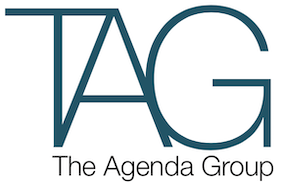The Victorian Government’s metropolitan planning strategy Plan Melbourne was released last week and provides a vision for Melbourne through to 2050. Consistent with metropolitan strategies over the past 50 years, Plan Melbourne is a comprehensive plan to maintain Melbourne’s liveability in the face of change and population growth.
Many of the familiar planning concepts that were central to Melbourne 2030 and previous plans remain. These include: encouraging a more compact city, the clustering of jobs, diverse housing and services in centres of activity, transit orientated development, preserving agricultural land, facilitating more affordable housing, better integration of land use and transport planning, boosting regional centres and protecting the environment from climate change.
Plan Melbourne’s emphasis on job creation is consistent with past metropolitan strategies although there are interesting new concepts such as delivering a new integrated economic triangle and national employment clusters. What these will mean in reality and whether they will receive genuine Government support remains to be seen.
Previous attempts to use planning tools to attract investment and jobs have rarely been successful. Rezoning land, fast tracking planning processes and creating structure plans are important tools but alone they will not anchor tenants to new sites if the land economics do not warrant private investment.Finding a way to drive further investment will involve a more hands on approach that may not sit comfortably with the more light touch approach of the current Victorian Government.
Plan Melbourne is unabashedly about greater infill development and this was displayed through the more flexible new residential zones that underpin this. This is further illustrated by the ambition to expand the size of the Central City and encourage density in new locations such as Fisherman’s Bend.
Where Plan Melbourne proves to be a more modern incarnation of some of those earlier plans is its ambition to create a city of ‘twenty minute neighbourhoods’ – recognising the importance of accessing services and facilities close to home wherever you live.
For twenty minute neighbourhoods to be achieved the Government will need to create a more compact city and slow urban sprawl where services and facilities struggle to keep up with residential growth. Halting further outward sprawl and encouraging development to be ‘up rather than out’ is illustrated through Plan Melbourne’s commitment to introduce a permanent settlement boundary.
If the urban growth boundary does become permanent and begins to slow sprawl this will truly set the plan apart from its predecessors.
Within Plan Melbourne there are many ideas and reviews the Government has committed to undertake. The new Metropolitan Planning Authority will certainly be busy meeting all these commitments and it is hoped they will be resourced appropriately. Councils are the key partners in many ambitions of the plan and will also need to be assisted in meeting these challenges.
There are some worthy manageable reforms suggested – from improving the design quality and amenity of residential apartments to funding the removal of level crossings through development rights – that may be able to be achieved in the short term.
In contrast, Plan Melbourne claims it will deliver a ‘pipeline of city-shaping transport projects’. At present these mostly appear aspirational at best. With the exception of the East-West Link and the development of the Port of Hastings the government has not committed serious funding to any of the city shaping projects it needs to in order to support population growth and encourage the connections required to move both people and freight through and around the city.
Many transport projects referred to as integral to meeting present and future transport needs – including the Melbourne Metro project, the potential North East Link, future rail extensions to the Melbourne Airport, Doncaster and Rowville and possible new tramlines to Fisherman’s Bend and E-Gate – yet none of these has been committed to by the Government yet.
These projects along with others mooted for further investigation but without any clear plan to fund them leave the strategy without the key piece of the puzzle needed to really make Melbourne click – namely a sophisticated, integrated and accessible public transport system supported by a better connected road network.
The current political environment leaves all governments reluctant to fund big infrastructure projects through borrowings, as they are fearful of an impact on their credit ratings and a corresponding electoral backlash if government debt rises.
To its credit Plan Melbourne does contemplate the need to open up new funding sources, including completing the reform of development contributions and flagging value capture as a potential way of part funding infrastructure. The Victorian Government will need to be bolder than ever before if it wants to avoid Plan Melbourne becoming yet another strategy that merely paints a vision for a bigger, brighter Melbourne that is never truly realised.
